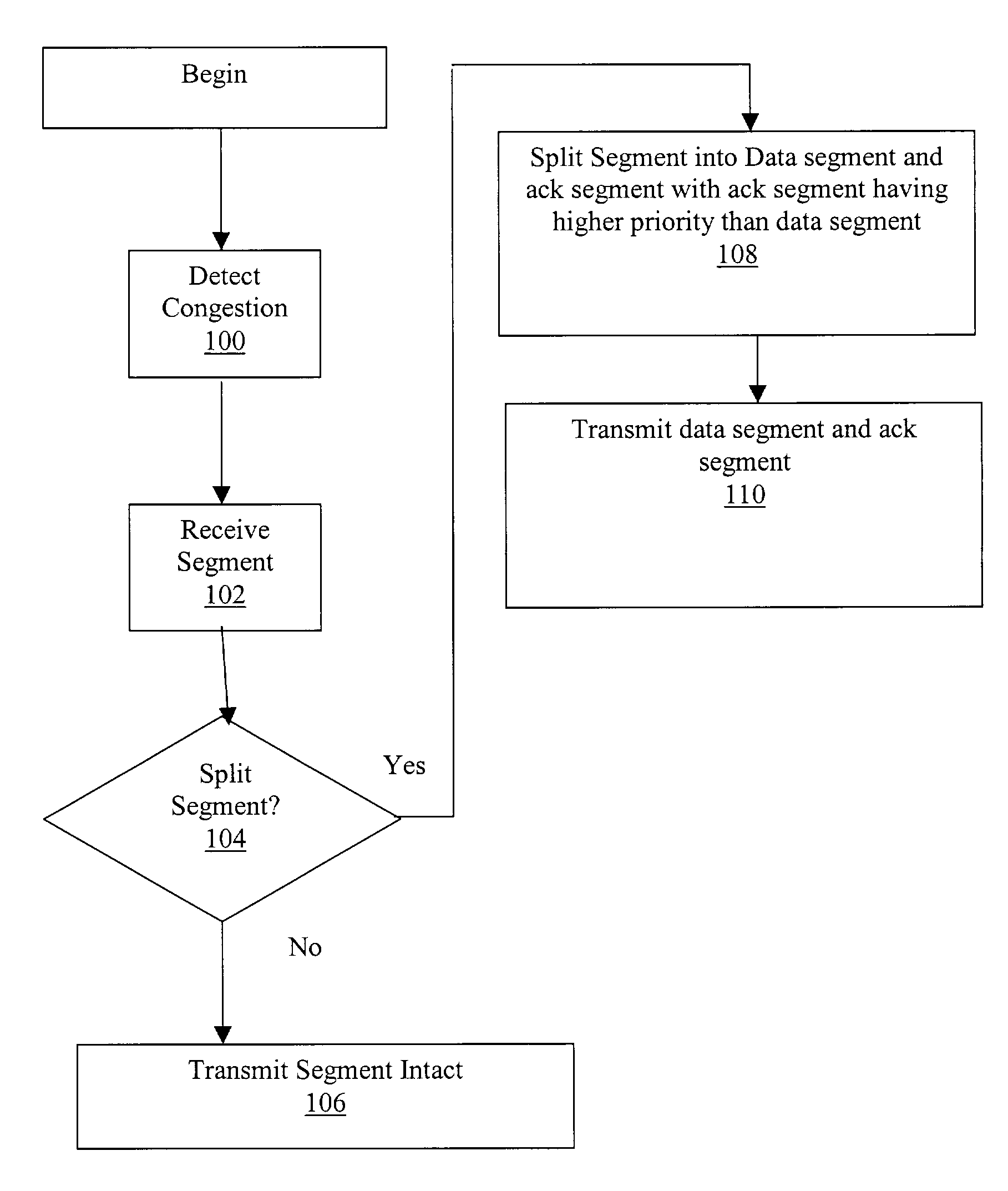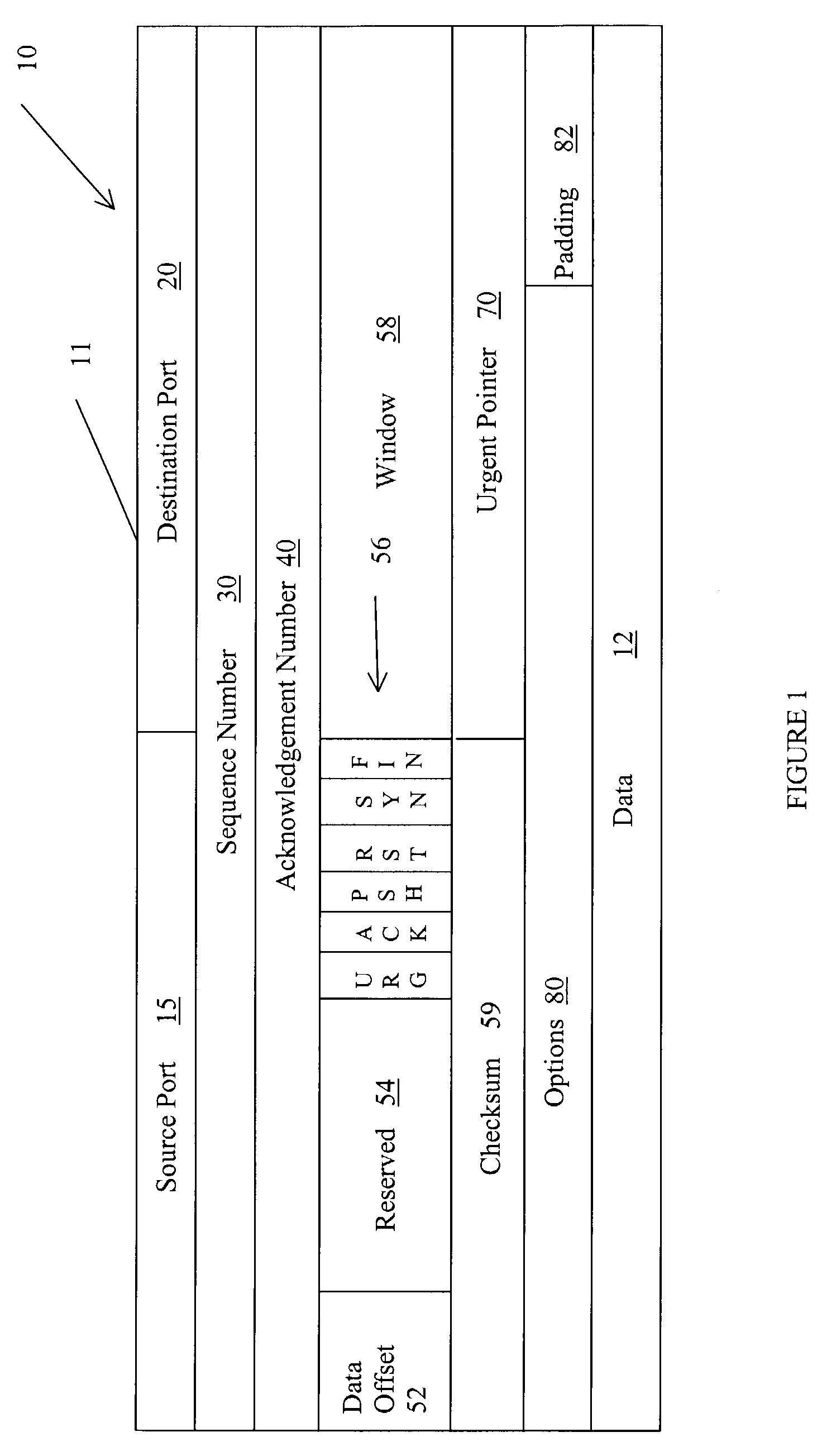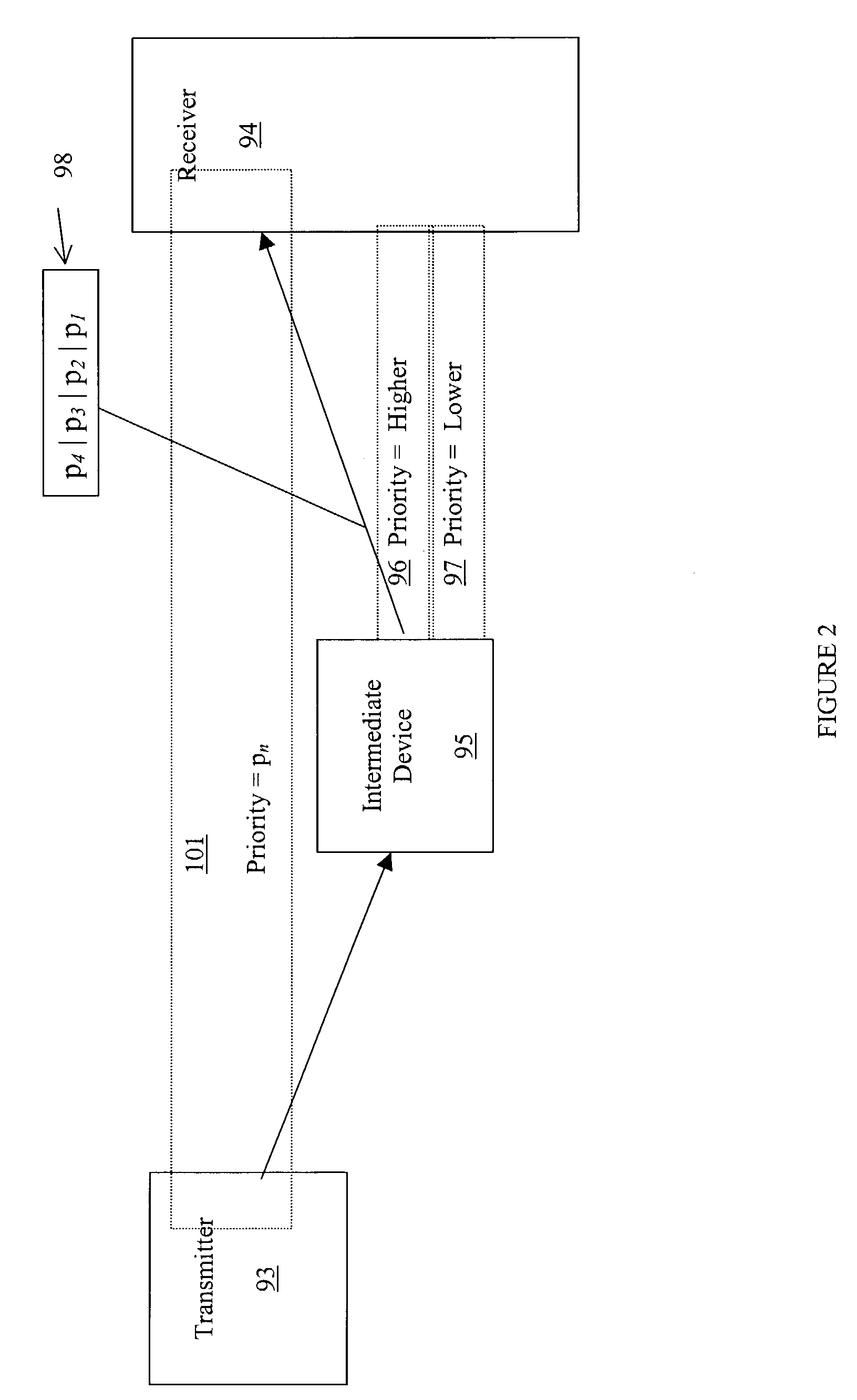Method for splitting data and acknowledgements in a TCP session
a data and acknowledgement technology, applied in the field of communication using the transmission control protocol, can solve the problems of inability to properly reassemble the data message at the receiver, the time of transmitter unnecessarily sitting idle while waiting for the acknowledgement is reduced, and the data speed along the link between the transmitter and the receiver may not be balanced, so as to increase the overall data speed of the session, the effect of accelerating through the network more quickly and reducing the time of the transmitter unnecess
- Summary
- Abstract
- Description
- Claims
- Application Information
AI Technical Summary
Benefits of technology
Problems solved by technology
Method used
Image
Examples
Embodiment Construction
[0023]Data may be transmitted between devices over a network. For instance, computers commonly send data over the Internet. Many different standards are used to send and receive data, and more than one standard may be used in a communications session. Standards specify low-level details, like signaling methods, and they specify high-level implementations, like user interaction with application programs.
[0024]The International Standards Organization (ISO) has defined a layered architecture for the operation of data communications systems. The ISO Open Systems Interconnect (OSI) model describes a layered system. Each layer provides additional features from the layer below it, and it masks the implementation details of the lower layer. Masking the implementation details allows a communications system to be constructed from independently developed layers.
[0025]The ISO OSI model has seven layers. They are: 1) the physical layer, 2) the data link layer, 3) the network layer, 4) the transp...
PUM
 Login to View More
Login to View More Abstract
Description
Claims
Application Information
 Login to View More
Login to View More - R&D
- Intellectual Property
- Life Sciences
- Materials
- Tech Scout
- Unparalleled Data Quality
- Higher Quality Content
- 60% Fewer Hallucinations
Browse by: Latest US Patents, China's latest patents, Technical Efficacy Thesaurus, Application Domain, Technology Topic, Popular Technical Reports.
© 2025 PatSnap. All rights reserved.Legal|Privacy policy|Modern Slavery Act Transparency Statement|Sitemap|About US| Contact US: help@patsnap.com



